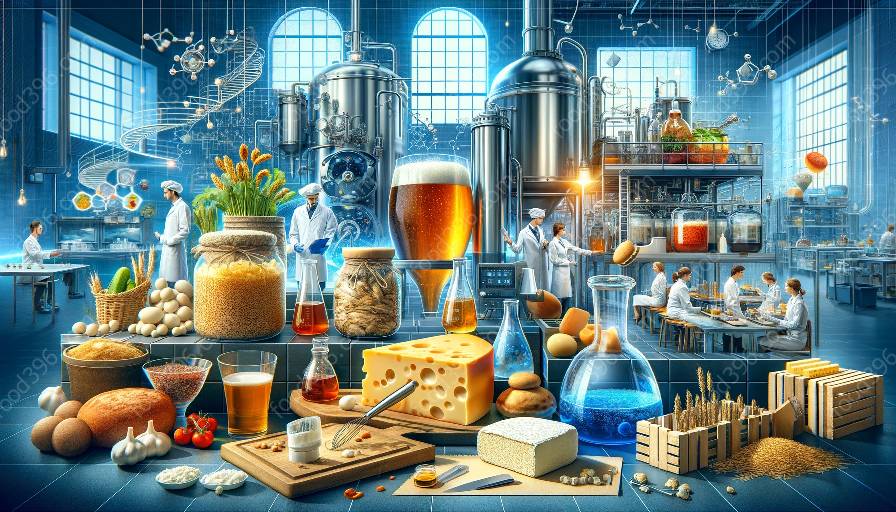Fermentation is an ancient and fascinating process that has been utilized by humans for thousands of years. At the heart of this transformational process lie yeast and bacterial fermentation, playing a crucial role in the production of a variety of foods and beverages. In this comprehensive topic cluster, we will delve into the science behind yeast and bacterial fermentation, exploring its applications in the realms of fermentation science, food, and drink, and uncovering the mechanisms by which these microscopic organisms work their magic.
The Basics of Fermentation
Fermentation is a metabolic process that converts sugars into acids, gases, or alcohol using microorganisms such as yeast or bacteria. This process has been harnessed by different cultures worldwide to preserve food, develop flavors, and create intoxicating beverages. Yeast and bacteria are the primary agents responsible for this transformative process, each contributing in unique ways to the final product.
Yeast Fermentation
Yeast fermentation is a cornerstone of many food and beverage production processes. Saccharomyces cerevisiae, the most well-known yeast species, is used in the production of bread, beer, and wine. In the presence of sugars, yeast carries out alcoholic fermentation, breaking down sugars into ethanol and carbon dioxide. This process not only leavens bread and produces alcoholic beverages but also creates complex and diverse flavor profiles in beverages like wine and beer.
Bacterial Fermentation
Bacteria also play an essential role in fermentation, particularly in the production of fermented foods such as yogurt, cheese, sauerkraut, and kimchi. Lactic acid bacteria, including Lactobacillus and Streptococcus species, are commonly used in these processes. Bacterial fermentation produces lactic acid, which acts as a preservative and imparts a tangy or sour flavor to the final products.
Fermentation Science and Its Applications
The understanding of yeast and bacterial fermentation has led to significant advancements in fermentation science. By studying the metabolic pathways and genetic makeup of these microorganisms, scientists have gained insights into optimizing fermentation processes for industrial production, developing new strains of microorganisms, and improving the quality and safety of fermented products.
Food and Drink
Yeast and bacterial fermentation have revolutionized the food and beverage industry, giving rise to a diverse array of beloved products. From the airy texture of bread to the complex flavors of beer, from the tangy notes of yogurt to the pungent aromas of cheese, fermentation has elevated our culinary experiences. Moreover, the use of fermentation extends beyond taste; it also offers numerous health benefits, such as the preservation of nutrients and the promotion of gut health through probiotic-rich foods.
Conclusion
The processes of yeast and bacterial fermentation are not only fundamental to the production of various foods and beverages but also hold significant scientific and cultural importance. With their ability to transform simple ingredients into complex and delightful products, yeast and bacteria continue to captivate our senses and inspire innovation within the fields of fermentation science, food, and drink.

